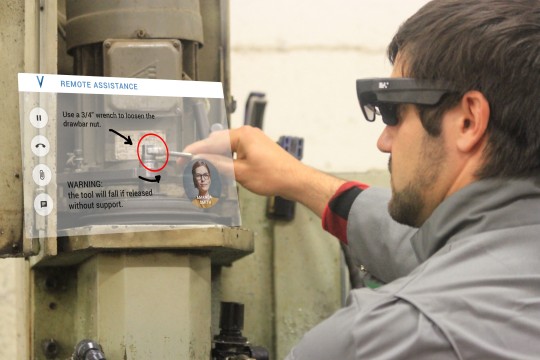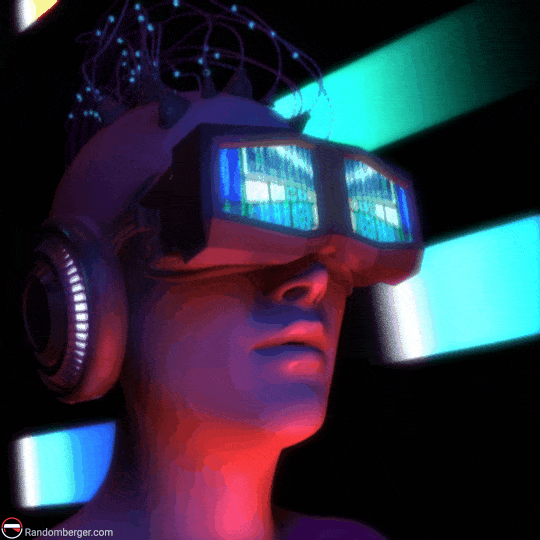-

In the last decade, it has been nearly impossible to keep up with the fast-paced growth of technology used in day to day life. As of 2017, 2.32 billion people used smartphones worldwide. Further projections estimate that 36% of the world’s population will use a smartphone by 2018. With the supersonic advancement of this technology, including smartphones, tablets, fitness trackers, cameras, and wearables, we are eager to learn what’s next?
Enter the world of virtual, augmented, and mixed realities. The use of technology to create a utopia, an intergalactic war zone, and an interactive workspace is growing rapidly. Already, Virtual Reality has been fighting its way into households worldwide, its big break coming with big players such as Facebook, Google and Apple purchasing headset and game manufactures in the last few years. Augmented Reality has had a slower start but it’s projected that 14.1 million US workers will be utilizing AR in the workplace by 2025.
Historically, Virtual Reality has always been a concept toyed with in sci-fi movies and comics. Experiencing it as an actual reality didn’t come to fruition until the mid-80’s and NASA’s Virtual Interface Environment Workstation (VIEW) system that combined a head-mounted device with gloves to enable the haptic interaction. Augmented reality, it’s beginning rooted in 1986 with Ivan Sutherland’s invention of a head-mounted display system, has had a slower start. Finally catching up, AR is widely used in Enterprise Manufacturing. It is personalized to the users’ needs and has a more practical application such as quality assurance or remote assistance on the job.
So how do we define Virtual, Augmented and Mixed Realities?
Virtual Reality: New Technology, New World

As the name implies virtual reality pertains to an artificial reality. The environment, the elements, and the whole experience are all unreal. Generally, the person experiencing virtual reality can feel the difference very easily between virtual reality and actual reality. With the use of modern headsets, this experience has improved but there is no illusion between what you feel and see even if it is 3D.
To make it easier, let’s say that virtual reality is a simulated environment created by using computer technology. Graphics and 3D modeling is the baseline of the technologies used. The scenes that are created here use animation and graphics tools and technology. There is a new wave in Virtual reality products launched by different brands. The most popular being the Oculus Rift, HTC Vive, Google Daydream View, Samsung Gear and Sony Playstation VR.
Augmented Reality: Same Old World, New Technology
Augmented reality is an enhanced version of a real-time image or a real image with an overlay of digital information. The information is layered on the image by using Smart Glasses and AR software. This is a revolutionary and unique technology often used to streamline Enterprise manufacturing. AR in the Enterprise made its debut in 2013 with Volkswagen’s MARTA app used to demonstrate repairs to mechanics as if the car were right in front of them. Written text and other information can be displayed over an image captured by any smart device and scanned by AR software running on apps in Android or iOS phones, tablets, and computers.
AR applications boast features that make working handsfree simple such as voice activation, remote assistance, instruction displays, and seamless data transfer. AR programs are used by military, medicine and other niches for training. Many AR software providers like Vital Enterprises provide software that creates a virtual workplace connecting colleagues working in different countries or regions.
The Basic Difference Between Virtual and Augmented Reality
Although the terms and concept might seem similar from the outside, there is a major difference between AR and VR in use. In Virtual reality, a fictional environment is created using 3D imaging technology and smart glasses. When a user dons their headset and switches on their game console, this image is projected creating a virtual reality. All the entities in that virtual environment will behave as if they were real i.e. people walking around the room, car horns honking in the street, wind rustling in the leaves of a tree. The user becomes a part of that environment as if one of the fictional identities. For example, in a Virtual Reality park, you will be able to walk around the soccer fields or play on the playground without actually being present. Along with a headset or eyepiece, sensors and sound effects are required to enhance the Virtual Reality and the interaction therewithin.
Conversely, in augmented reality, you can see a fictional or non-existent entity moving around on a real image that is right in front of your eyes. You can experience watching an elephant standing or walking on the road that is actually in front of you. The image is layered such that you will be able to see live traffic and people walking behind the image of the elephant. In augmented reality the canvas can be anything you want, no special gadgets are required to enhance the “live” aspects of the world you are enhancing with AR.There are many apps and types of software available that you can use to get the feel. Most smart devices and smart glasses or headsets in existence today, like Google Glass, ODG and Epson headsets are compatible with augmented reality software
Mixed Reality: The Technology In Between
Mixed reality is, as its name suggests, a cross breed between AR and VR. Sometimes AR and mixed reality are grouped as one. However, there is a baseline difference between the two. Mixed reality extends the real images with a virtual environment and entities as if they actually belong in the real world. It is very hard to differentiate augmented reality from mixed reality as there is a very thin line between the two. For example, if you place a 3d object on a real image, like a pet and you go about your work then this is a mixed reality. But this can also be and is sometimes advocated as augmented reality.
You can call the mixed reality as the bridge or link between the AR and VR. A gadget like Hololens and Magic Leap is a step ahead in this direction.
In short, all these concepts and technologies let you imagine and experience the new dimension of reality. The advancement of such technologies is filling the gap between reality and imagination, which in turns open doors to the seemingly impossible.